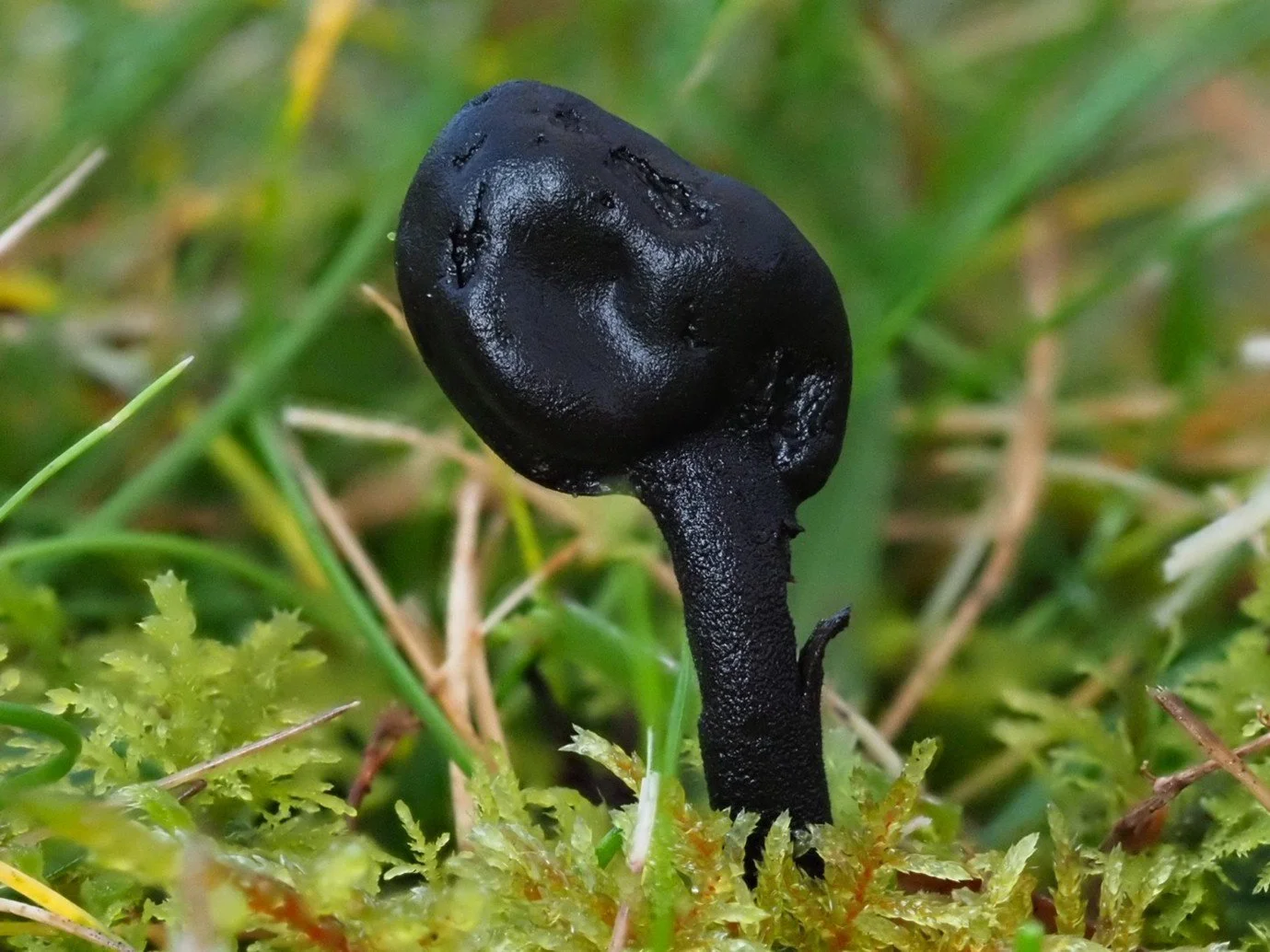The importance of fungi in meadows
Conservation grazing, CHEGD fungi and meadows
Alfred Drummond- Herdman
The CHEGD fungi
The grasslands of Britain and Ireland are home to a wide range of fungi. These include macrofungi (large enough to be seen with the unaided eye) and microfungi (requiring a microscope to observe).
Some of the most important of the grassland fungi are referred to as the ‘CHEGD assemblage’. These fungi have a special relationship with grasslands such as meadows. CHEGD is an acronym for five groups of ecologically important – and in many cases, vulnerable – grassland fungi.
‘C’ stands for the ‘clavariods’, a group more commonly known as ‘coral fungi’. Most British species in this group occur in grasslands. They are easily identifiable by their branching, coral-like fruiting bodies.
‘H’ stands for Hygrocybe, a genus commonly referred to as the waxcaps. Waxcaps are perhaps the most beautiful of the CHEGD assemblage. They are classically mushroom shaped, with a cap, gills and stem. They come in a wide range of colours and many are multicoloured. Although recent DNA analysis has split this group into several genera, they are still commonly referred to as Hygrocybe in most guidebooks and literature.
‘E’ is for Entoloma, a genus also known as the pinkgills. Unsurprisingly, these mushrooms typically have pinkish gills – although sometimes they are cream-coloured, and you have to use your imagination!
‘G’ stands for Geoglossum and its relatives, collectively known as the earthtongues. These are somewhat similar in appearance to the clavaroids (coral fungi) but tend to be darker in colour and less clustered in growth. Whilst a couple of species in this group are relatively common in Britain, the majority are becoming increasingly rare.
‘D’ stands for Dermoloma and its relatives, also called the crazedcaps. These are saprotrophs, meaning they feed on rotting plant matter. This was a more recent addition to the assemblage; originally it was just CHEG.
Where do CHEGD fungi grow?
In Britian, CHEGD fungi are mostly found in unimproved (i.e. non-fertilised), natural or semi-natural grassland. Typical habitats include old pasture, meadows and other open, long-established grassy areas. They are also found in more managed areas like graveyards and the lawns of stately homes. This is because the soil is generally undisturbed for long periods and the grass is kept short – particularly over autumn – by mowing. This mimics herbivore grazing.
Crucially, waxcaps and other CHEGD fungi require grass being kept short in order for their fruiting bodies (i.e. mushrooms) to grow. Their growing period is broadly late summer to early winter: essentially from the start of the late summer rains to the first hard ground frost.
This aligns with traditional meadow management, which is to allow wildflowers and grasses to grow tall in spring and summer and then to mow or begin grazing in the late summer. Therefore, it is important to cut meadows at the end of summer to allow CHEGD fungi to grow, which can be done by mowing or grazing.
Conservation grazing on meadows
Conservation grazing on a meadow after the flowering season supports and contributes to healthy soils and diverse plant and fungal life. The benefit of such a grazing regime on a meadow is two-fold.
First, grazing maintains a short sward and diverse plant assemblage. Grazing keeps the grass level low from late summer to early spring, which means the meadow structure is maintained year-on-year and scrub encroachment is prevented.
Cattle are particularly well suited to conservation grazing because they pull at long grasses and other plants, helping to open up the sward and allowing wildflower seeds to establish. Recent research on Alpine regions found that cattle have been associated with increased plant diversity over the past 2000 years. One reason for this is their grazing patterns, which are less selective than other animals like sheep. Cattle eat a broad range of plant species, including dominant grasses. By reducing the dominance of these grasses, cattle create opportunities for less competitive species, enabling plants such as forbs (herbaceous flowering plants) and legumes to establish and thrive. The result is that overall plant diversity increases.
Second, conservation grazing enables the eating–dunging nutrient cycle. When herbivores eat plant material, many of the organic compounds are unable to be digested. The animal’s digestive system cannot break down many of the complex compounds such as lignin – a compound in the cell wall of plants that gives them their rigidity. This undigested material ends up in the herbivore’s dung, which is where another group of specialised fungi, coprophilous fungi, come in.
The eating–dunging cycle
Coprophilous fungi start their lifecycle when a herbivore inadvertently consumes spores that have landed on plant material. The spores pass through the digestive tract and germinate in the dung. The fungi will then develop in a mycelium and, over time, feed on the undigested plant material. They produce specialised enzymes that degrade complex compounds like lignin and cellulose. These are broken down into simpler, smaller compounds like nitrogen and phosphate.
A combination of invertebrate activity and rainfall allows these compounds to leach into the surrounding soil, providing easy-to-absorb nutrients and minerals for the surrounding plants. Therefore, coprophilous fungi recycle nutrients that would otherwise remain locked up in the herbivore’s dung.
A balanced meadow ecosystem
Carefully managed meadows are dynamic ecosystems that support a wide range of life and natural processes. Leaving the area uncut through spring and summer allows wildflowers, which are particularly beneficial to pollinators, to develop. Plants such as yellow rattle (Rhinanthus minor), which are hemiparasitic on grasses, help maintain a low-nutrient, open sward, conditions that are necessary for CHEGD fungi.
Cutting the meadow in late summer lowers the sward, which is necessary for CHEGD fungi to fruit in autumn. Finally, grazing through autumn and winter maintains a low sward height and allows for the eating–dunging cycle, completing the interaction between plant, fungi and herbivores.
Further reading
How to Find and Identify Waxcap Fungi: https://www.plantlife.org.uk/get-to-know-waxcaps/
The Waxcap Website: https://www.aber.ac.uk/waxcap/index.shtml
Introduction to Waxcap Fungi: https://www.greatirishgrasslands.ie/wp-content/uploads/2023/09/Introduction-To-Grassland-Fungi.pdf








